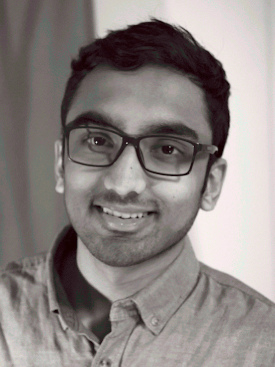| B. Sc. Karthik Chandrashekara | |||||||
|
Publications(up to 2021)
-
Ramsey imaging of optical traps, Phys. Rev. Appl. 16, 024041 (2021)arXivBibTeX ABSTRACT »
ABSTRACT »The mapping of the potential landscape with high spatial resolution is crucial for quantum technologies based on ultracold atoms. However, the imaging of optical dipole traps is challenging because purely optical methods, commonly used to profile laser beams in free space, are not applicable in a vacuum. In this work, we demonstrate precise in situ imaging of optical dipole traps by probing a hyperfine transition with Ramsey interferometry. Thereby, we obtain an absolute map of the potential landscape with micrometer resolution and shot-noise-limited spectral precision. The idea of the technique is to control the polarization ellipticity of the trap laser beam to induce a differential light shift proportional to the trap potential. By studying the response to polarization ellipticity, we uncover a small but significant nonlinearity in addition to a dominant linear behavior, which is explained by the geometric distribution of the atomic ensemble. Our technique for imaging of optical traps can find wide application in quantum technologies based on ultracold atoms, as it applies to multiple atomic species and is not limited to a particular wavelength or trap geometry.
-
A High-Power Ti:Sa Laser System for Atomic Quantum Walks Experiments, (2020), Master thesisBibTeX ABSTRACT »
ABSTRACT »This thesis details the experimental efforts towards quantification of laser frequency noise by the use of an optical frequency discriminator and its suppression by means of measuring and reducing optical path length differences to prevent heating and loss of ultracold Caesium atoms trapped in two-dimensional state-dependent optical lattice. The discriminator used is a Fabry-Perót cavity with the side-of-fringe locking technique to be sensitive to frequency fluctuations of the input light field which are detected as changes in the intensity of the cavity signal. The measured noise spectrum revealed the performance of the laser in the frequency domain and was used to refine the same. A reduction in the laser linewidth was achieved in this manner. The same cavity was also transformed in to a transfer cavity to prevent long-term drift in the laser frequency. The frequency noise cannot be completely eliminated from the laser and so the task then became the reduction of the optical path length differences in the experiment by which the noise can manifest at the postion of the atoms. Conditions for achieving minimal path length differences were derived. Three methods were employed to measure the path length differences: A geometric distance measurement, an optical measurement using interferometry and at last using the atoms. The use of the atoms in particular displayed the extent to which the common-mode frequency noise can influence the experiment.
Research areas
Our group
Publications
Former research topics
Teaching
Further information
Login
Colloquia
- Curtius Lectures
- 03/05/22 - 06/05/22










